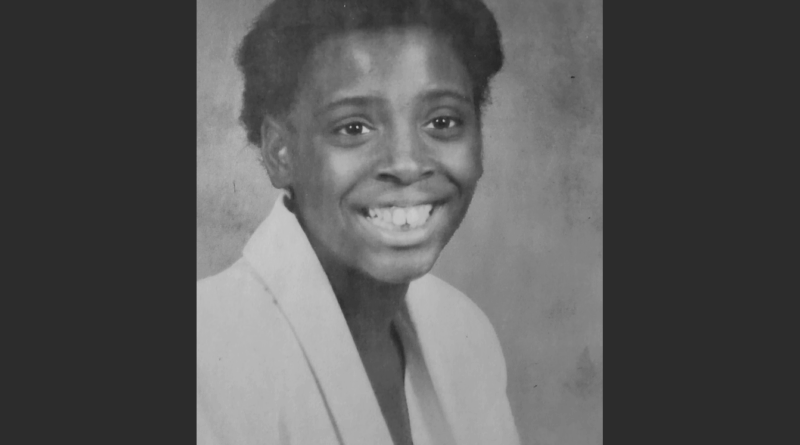The Murder of Shana Renee Price in Springfield Massachusetts
On December 26, 1990, the quiet winter morning in Springfield, Massachusetts, was pierced by an awful discovery in Blunt Park. Seventeen year old Shana Renee Price, a young mother from the city, was found murdered. The days after Christmas are usually marked by rest, family visits, and the promise of a new year. Instead, this neighborhood park became the center of a homicide investigation that has lasted decades. What happened to Shana shocked her community, challenged investigators, and remains a hard reminder of the urgency of justice for victims who cannot speak for themselves.
Shana’s Life And Promise
Shana Renee Price was still forming the outlines of an adult life. Friends recalled a teenager who loved to laugh and cared deeply about those around her. She carried responsibilities uncommon for someone her age, yet she was determined to shape a future that gave her child stability and pride. The holiday season offered simple comforts and a break from routine. Like many families in Western Massachusetts, the Prices looked ahead to a new year with the hope that better days were within reach.
In speaking of Shana it is important to hold her identity as more than a case file. She was a daughter, a friend, and a young mother who deserved the full measure of safety and opportunity. The story that follows is rooted in the fact that a real person, with real relationships and plans, was taken from those who loved her.
The Morning In Blunt Park
Blunt Park sits in the heart of Springfield as a popular public space with fields and wooded edges that draw walkers and families. On the morning of December 26, 1990, a passerby in the park came upon a scene that would change the course of the investigation and the community’s sense of security. Emergency responders arrived and quickly confirmed the worst. The area was secured, and detectives began the careful work of documenting and preserving every observable detail.
Winter light reveals and conceals in equal measure. Footpaths are hard packed and sound carries farther, but shadows linger under trees and along embankments. Investigators moved methodically to determine where the attack happened, whether the body had been moved, and what traces the offender may have left behind. Even in the first hour they understood that each small observation might later become the thread that ties someone to the crime.
The Nature Of The Crime
It soon became clear that Shana had endured a brutal assault before her death. The violence underscored that this was not an argument that escalated but a predatory offense. The details are difficult, but they matter because they define motive and guide the search for a perpetrator. A homicide combined with sexual assault narrows investigative focus toward offenders who have shown similar behavior or who present known risk factors in past cases.
In crimes like this, the first questions are straightforward. Where did the offender approach from. Was a vehicle involved. Did the person know the victim. Did anyone in surrounding neighborhoods hear a struggle. Each answer opens or closes a path for detectives, building a logic tree that can be followed in the days and months that follow.
The Early Investigation
Springfield detectives canvassed the area around Blunt Park and the neighborhoods that feed into it. They looked for anyone who might have seen Shana in the hours before the attack, reviewed recent reports of harassment or assaults, and traced the movements of individuals with a history of violence in the region. The day after a holiday complicates witness recall. Many people are off work, travel patterns are irregular, and the presence of visitors can mask who is familiar to the area and who is not.
Investigators also pursued the quiet work that does not make headlines but often proves decisive. They pulled recent arrest logs, compared offense patterns, and spoke with other agencies about similar cases. They considered whether the offender was an opportunist who struck because a vulnerable moment presented itself or someone who had stalked the park and chosen a victim through prior observation.
Forensic Evidence And What It Meant
From the start, the evidence indicated a single male offender. Biological material recovered at the time allowed for later DNA profiling as technology matured. Years after the murder, a single source male DNA profile was developed and entered into national databases. No direct match emerged, but the profile became a permanent anchor for the case. The presence of that profile means the offender left behind a trace that can one day identify him with scientific certainty.
The existence of DNA does not solve a case on its own. It requires either a database match, a comparison to a specific person developed as a suspect, or a genealogical lead that points to a family line. Still, the forensic foundation altered the trajectory of the investigation. Detectives were no longer reliant only on witness memory or circumstantial inferences. They had a fixed point of truth that could test alibis and confirm or eliminate potential suspects.
The Turn To Forensic Genealogy
As techniques advanced, the investigative team expanded its toolkit to include forensic investigative genetic genealogy. In this approach, trained analysts compare a lawfully obtained crime scene DNA profile to consenting genetic databases that allow law enforcement searches. Those comparisons may reveal distant relatives, sometimes as remote as third or fourth cousins. From there, genealogists construct family trees using public records and historical documents to narrow toward a potential suspect who fits the correct age, sex, geography, and life history.
This method does not replace traditional police work. It refines it. Genealogy generates a set of possible names, but detectives must still confirm identity through lawful DNA collection, interviews, and corroborating evidence. Even when the genealogy points to a single likely individual, prosecutors require a chain of proof that would withstand courtroom scrutiny. In Shana’s case, the adoption of these tools signaled renewed momentum. It meant modern eyes were on the evidence again, and that a scientific route to a name remained within reach.
Public Appeals And Composite Imagery
Cold case work thrives on public memory. To that end, authorities released composite images created with modern phenotype tools that estimate traits like hair color, skin tone, and facial structure from the DNA profile. These are not photographs. They are scientific best estimates designed to jog recollection and stimulate tips. Alongside the composites, investigators reminded the public that every fragment of memory can matter. Someone may recall a man who returned home in the early morning hours with unexplained injuries or clothing in disarray. Someone may remember a change in routine right after the holiday.
Public appeals also carry a moral message. They tell a community that a victim has not been forgotten, that the file is still open on a detective’s desk, and that truth remains the goal. In cases with a surviving family, those notices reassure loved ones that the system is still working for them, even when years have passed.
Why Cases Like This Are Hard
Stranger on victim assaults are among the most difficult to solve. They occur quickly, often outside the view of people who might intervene, and leave minimal opportunity for identification at the scene. If the offender lacks a local criminal history, there may be no obvious trail to follow. Even when a particular name surfaces, time erodes alibis, and witness reliability can diminish as details blur.
Investigators must weigh every lead with care. A false turn wastes time and can taint later testimony. A premature arrest, unsupported by lab results, jeopardizes future prosecution. The balance of thoroughness and speed can be agonizing for families waiting for answers. The reality is that patience and methodical work are often the most effective tools in reaching a result that will hold in court.
The Impact On Family And Community
For Shana’s family, the days after December 26, 1990, became years of anniversaries marked by grief. Holidays and birthdays acquired a second meaning, a quiet calendar of remembrance set beside the public calendar of celebration. Friends and neighbors in Springfield felt the loss as well. Blunt Park is a common space, and the violence that happened there touched many who walk those paths with children, friends, and loved ones. The fear and sorrow were real, but so was the resolve to honor Shana by insisting that her name not fade from public memory.
Communities often respond by strengthening networks of care. Vigils, neighborhood watch efforts, and partnerships with local groups build the kind of attention that makes public spaces safer. The long arc of support matters. Families facing unsolved homicides need practical help with the rituals of remembrance and the persistence to keep a case in the public eye.
Lessons For Personal And Civic Safety
It is natural to ask what might prevent a similar tragedy. No set of steps can guarantee safety, but certain habits lower risk. Travel with a trusted person when possible, especially in the dim hours of morning or late night. Share your route and expected return time. Keep a phone accessible and charged, and know where to step into a lit, staffed place if you sense danger. If an encounter feels wrong, act early rather than later. These are not judgments on victims. They are reflections offered in the hope that others might be spared harm.
Cities also have obligations. Clear sightlines, reliable lighting, and active programming in public parks increase natural surveillance. Coordinated patrols tuned to seasonal patterns discourage predatory behavior. Faster processing of forensic evidence and dedicated cold case resources keep pressure on offenders who might otherwise feel sheltered by time.
The Enduring Call For Accountability
The heart of Shana’s case is simple. A person committed a violent crime and has not yet faced the consequences required by law and conscience. The presence of a single source DNA profile means there is a scientific path to the truth. With each year, more relatives add their profiles to consumer databases, more public records are digitized, and more agencies gain access to trained genealogists who know how to interpret complex family lines. What once felt impossible now feels plausible.
Accountability is not only about punishment. It is about giving a family the knowledge of who and why. It is about a community being able to say that violence in a shared place was not ignored. It is about the next person who walks the same path believing that harm will be answered by collective action.
Remembering Shana Renee Price
The most important act we can take as we retell this story is to speak Shana’s name with care. Shana Renee Price should be remembered for her life, not only for the terrible circumstance of her death. She was loved, and she loved in return. She mattered to her family and to a wider circle of friends who still carry her forward in conversation and remembrance.
Keeping her memory present is not a substitute for an arrest. It is the ground on which long work stands. When people remember, they notice. When they notice, they call. A memory, once dismissed as unimportant, can surface years later and become the missing piece that allows evidence to lock into place.
Conclusion
On December 26, 1990, in Blunt Park, Springfield lost a daughter. The investigation that began that morning has traveled from traditional canvasses and case folders to the frontiers of forensic genealogy. Through it all, one point has not changed. There is a truth to be found, and the tools to find it are stronger than ever. This case endures because the people who loved Shana endure, and because a community’s sense of justice demands an answer.
If you knew Shana, if you were near the park that morning, or if you have carried a memory you were unsure mattered, consider again what you saw or heard. One call can bridge thirty five years and bring a measure of peace to a family who has waited since that winter morning for a name, a face, and the beginning of justice.
Discover more from City Towner
Subscribe to get the latest posts sent to your email.




